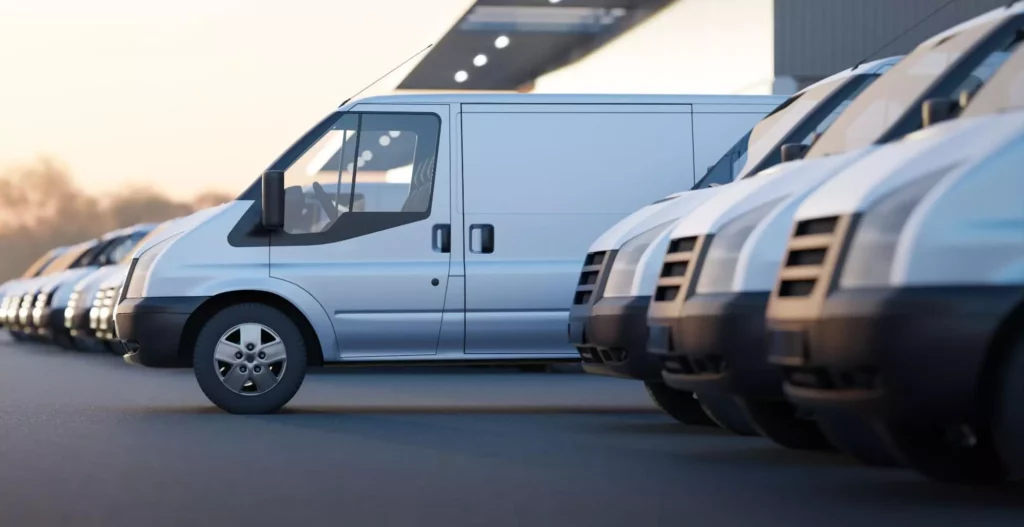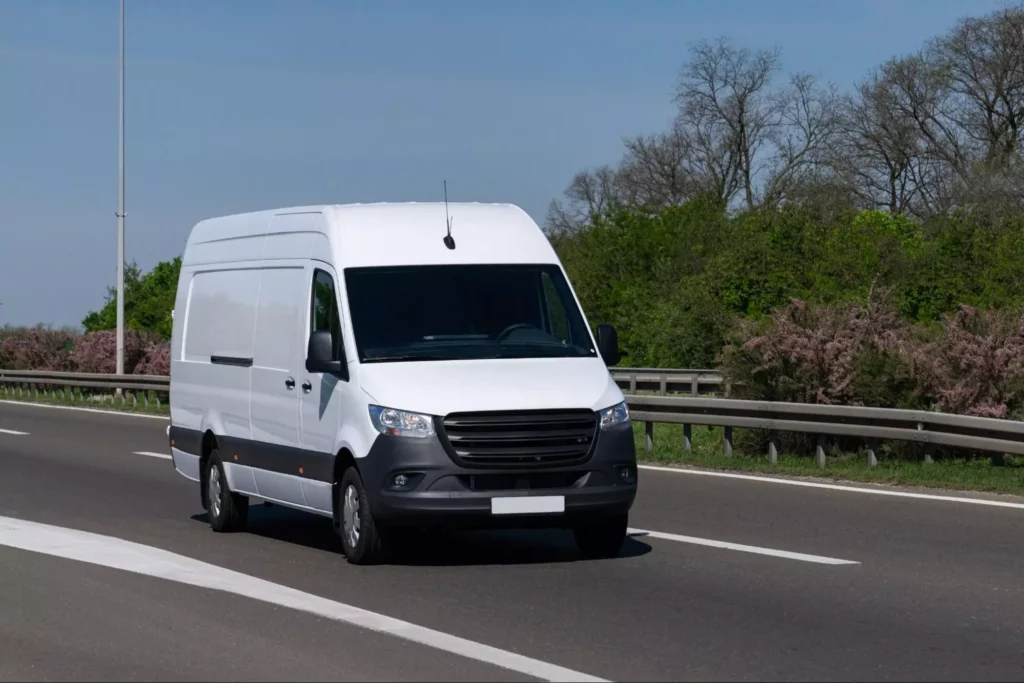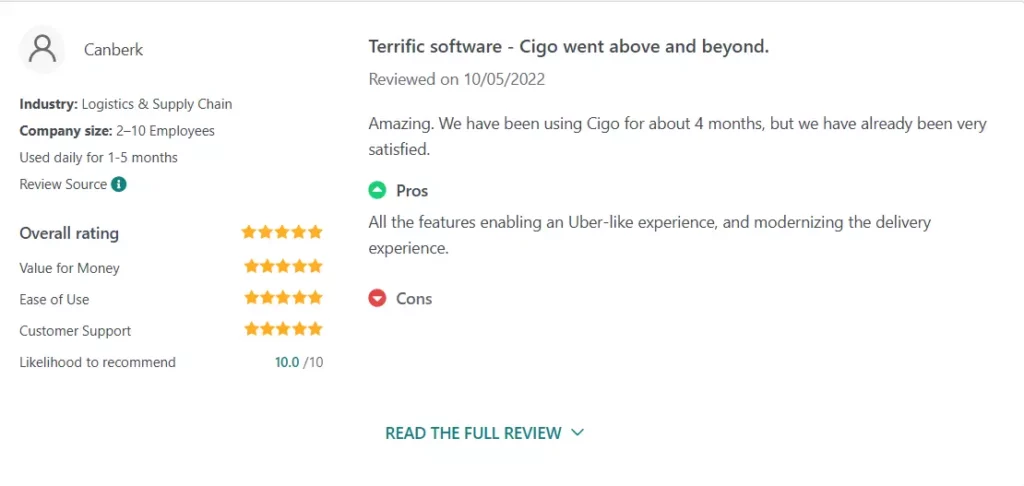Furniture delivery demands precision. Unlike most standard parcels, sofas and dining sets require careful handling, precise scheduling, and often assembly services.
According to Retail Dive research, furniture damage rates during delivery reach 15-21% industry-wide. Failed deliveries drain profits and destroy customer trust.
Modern furniture delivery software does more than solve problems. It turns routing, handling, and the final handoff into strengths. The right platform prevents damage and delivers the white-glove experience customers count on.
Learn more about industry-leading solutions from CIGO Tracker and get started today.
Key Takeaways
- Review existing scheduling, routing, and customer communication workflows.
- Determine KPIs: the rate of failed delivery, average miles per stop, first-attempt success, and customer satisfaction.
- Map integration helps identify the best delivery routes and connects you with vendors who specialize in furniture logistics.
- Implement an intuitive furniture delivery software and allocate funds towards the onboarding, training, and continuous optimization.
- Before implementation, set up some baseline measures to gauge ROI properly.
- Build scalable solutions to enable business growth.
The Complex Reality of Furniture Logistics
Furniture delivery looks simple on paper.
In practice, it’s anything but. Behind every successful drop-off is a mix of planning, coordination, and on-the-ground problem-solving that most logistics systems were never built to handle.
Unique Challenges in Furniture Delivery
Furniture logistics is not as easy as dropping a box at a doorstep.
These large and expensive items require special trucks and professional movers. Every house puts a fresh puzzle in front of the team: narrow staircases, small elevators, and floors that need to stay scratch-free.
Furniture logistics must adapt to each situation.
White-glove service further complicates it with assembly, removal, and exact placement requirements. Reliable furniture delivery software is essential for managing these demands efficiently.
High Cost of Failure in Furniture Delivery
When a high-value item like a $3,000 sectional arrives damaged, the impact on your finances and reputation is significant.
According to Furniture Today, 61% of customers will never shop with a company again after a late or failed furniture delivery.
The burden then rests on customer-service teams. Each unsuccessful delivery creates numerous phone calls, emails, and, in many cases, social media complaints.
A single negative review of broken furniture may travel quicker than positive experiences, and this undermines brand reputation in a market where trust informs buying decisions.
Rescheduling cascades through operations. Crews sit idle. Trucks come back empty. Each missed appointment leads to a plummeting customer satisfaction.
Inefficiencies in Traditional Furniture Delivery Operations

Legacy systems struggle with the complexity of furniture logistics. Delivery dispatch software replaces manual scheduling, generic routing, and disconnected tools, so you stop losing time to delays, missed windows, and wasted capacity.
Manual Scheduling and Dispatch Pitfalls
Relying on manual processes in furniture logistics creates confusion and delays. Constant change requests are hard to follow using paper schedules and phone tags.
Data input mistakes, lost addresses, or incorrect delivery information are more probable, and this directly affects the efficiency of operations and customer satisfaction.
Ineffective Route Planning
Generic routing software fails furniture logistics spectacularly.
Routing tools built for small packages miss what furniture customers actually need:
- Missed delivery windows – Your customer expects their recliner at 10 AM, but generic software schedules it for evening, turning convenience into frustration.
- Wasted truck capacity – You’re hauling three dining sets when your truck could handle six because the planner ignores furniture dimensions and weight distribution.
- Schedule chaos – One traffic jam destroys your entire day when you can’t reroute dynamically around blocked highways.
No matter how efficient the route looks on paper, it still feels like a failure to your customer.
Poor Visibility and Customer Communication
When buying expensive furniture, customers demand transparency. A report by PWC noted that 80% appreciate easy-to-use tracking and 83% desire proof-of-delivery.
Basic alerts such as “en route” do not inform them of anything specific. When they call for an update, support teams often have no real answers to give.
In furniture logistics, this gap weakens trust and brand credibility. Real-time visibility and clear updates are guaranteed by specialized delivery software, which keeps customers informed and satisfied.
How Furniture Delivery Software Addresses Sector-Specific Pain Points

Traditional tools fall short in furniture delivery.
Schedules change, expectations are high, and teams waste time managing chaos.
Purpose-built software fixes these problems with features designed for the job.
Automated, Dynamic Scheduling
Automated furniture delivery software puts an end to scheduling chaos:
- Drag-and-drop tools help dispatchers change schedules in real time.
- The system prevents the occurrence of double-bookings.
- Customers manage their own schedule online.
- ETA updates and appointment reminders are sent without much effort.
- Automated routine communications allow teams to concentrate on actual problems.
Route Optimization Tailored for Furniture Logistics
AI-powered routing meets the specific demands of furniture logistics. Algorithms take into consideration delivery windows, crew requirements, and vehicle specifications per stop. White-glove appointments get the time they deserve, while standard deliveries remain quick.
Routes are also updated in real time as traffic changes.
Cancellations or urgent requests will trigger immediate changes, and new stops are accommodated in the schedule without any interference.
Real-Time Tracking and Proof of Delivery
Real-time tracking and proof of delivery create transparency in furniture logistics:
- Customers watch live driver locations and get arrival countdowns.
- Digital proof of delivery includes:
- Customer signatures captured on electronic pads.
- Photos confirming placement and assembly.
- Completion checklists verified by the crew.
- Exception handling is automatic:
- Damage reports launch instant customer notifications and resolution steps.
- Post-delivery follow-up is clear and systematic, not guesswork.
Handling, Assembly, and Reverse Logistics Management
Furniture delivery covers transportation, handling, and assembly.
Crews receive clear instructions, including required tools and stair-carrying needs. Old furniture removal is scheduled and tracked alongside deliveries.
Returns, warranty pickups, and repairs all run through the same system. That means less confusion for your team and a smoother, more professional experience for the customer every time.
Integrating Furniture Delivery Software with Existing Enterprise Systems

No logistics platform works in isolation. For furniture brands, true efficiency comes when delivery software connects directly with the systems you already use.
That includes your ERP, warehouse tools, and online storefront. It creates one connected workflow from sale to doorstep.
ERP, WMS, and E-commerce Integration
Disconnected systems cause errors and delays. Furniture delivery software integrates with ERP, WMS, and e-commerce platforms. Inventory updates in real time, reducing the risk of overselling.
Order management systems automatically trigger delivery workflows, cutting down on manual handoffs between sales, warehouse, and delivery teams.
Data moves smoothly across all departments. Sales teams check accurate delivery capacity, warehouse staff view updated schedules, and customer service instantly accesses full order histories.
This integration keeps operations efficient and information consistent.
Mobile Applications for Crews and Drivers
Mobile apps are integral for logistics usability. Researchers found that specialized apps in the “logistics in life” domain meet high usability standards, according to MDPI.
Crews get route updates instantly. Customer contact data stays current. Proof-of-delivery steps like signatures and photos are structured and complete.
On-site issues trigger immediate incident reports while exception management alerts dispatch fast.
Field teams operate smoothly, communication stays seamless, and tasks are tracked reliably.
Customer Portals and Self-Service Tools
Customer portals and self-service tools meet today’s demand for digital convenience. These features streamline furniture delivery and enhance the customer experience:
- Customers schedule appointments online at any time, eliminating phone tags.
- Real-time order tracking provides transparency without extra calls.
- Easy rescheduling options let customers adjust deliveries on their terms.
- Feedback is collected automatically and linked to each order.
- Reviews connect to delivery records, giving teams clear insights for service improvements.
Each step builds satisfaction, loyalty, and operational efficiency. To see the impact of customer engagement features on last-mile delivery, see key customer engagement features in action..
Quantifying Business Value: ROI of Delivery Software in Furniture Logistics
Delivery software is a direct investment in profitability, efficiency, and customer loyalty. When systems run smoother, costs drop and satisfaction climbs. The return shows up quickly in saved miles, fewer complaints, and more repeat business.
Operational Cost Savings
According to a study in Production and Operations Management, up to 20% of B2C deliveries fail on the first attempt. Each failure triggers extra fuel, labor, and service costs.
Optimized routing slashes mileage and timetables stabilize, reducing overtime. At the same time, automated notifications lower call volume. Together, these improvements drive tangible operational cost savings.
Improved Customer Experience and NPS
Improved delivery software elevates customer experience and Net Promoter Score (NPS):
- The success rates of first-attempt delivery rise, which leads to higher satisfaction scores
- Referral rates increase as the expectations of the customers are met or surpassed.
- Reduced complaints and negative posts as the consistency of delivery increases.
- Brands are distinguished by reliability and service, standing out from competitors that are dependent on manual processes.
Systematic optimization turns operational excellence into a clear competitive advantage.
Scalability and Growth Enablement
Scalable systems support growth without chaos.
Expand into new territories with confidence, using accurate capacity planning to manage peak volumes. New services can be folded into daily operations without disrupting the pace.
Standardized onboarding makes it easy to bring 3PL partners up to speed quickly.
Once they’re active, continuous performance tracking helps maintain quality across every provider.
Together, these capabilities give leaders clear and measurable reasons to invest in purpose-built furniture delivery software.
CIGO Tracker in Furniture Logistics: Differentiators and Results

When furniture delivery works, it feels effortless. But behind the scenes, it takes coordination, timing, and the right tools. CIGO Tracker was built with these demands in mind, giving furniture brands the precision and control they need to deliver at scale, without the stress.
End-to-End Visibility and Control
CIGO Tracker gives every team the visibility and control they need, from dispatch to delivery.
- Dispatchers track fleet activity in real time without guesswork
- Customer service instantly pulls up complete order histories for any inquiry
- Brand managers monitor performance across partners and channels without digging for data
- Role-based permissions keep things secure, each user sees only what’s relevant to their job
Retailers, 3PLs, and internal teams work efficiently and confidently inside the same system.
Advanced Route Optimization and Real-Time Adaptability
Our platform is a step ahead as it reroutes deliveries when conditions change. Our smart time slot features ensure that work flows and customers are happy.
We also pair vehicles with the size and weight of every piece, so oversized furniture passes through all doorways. Collection, installation, and returns go through simple and pre-programmed processes that do not involve additional phone calls or delays.
We never skip a beat because service plans are updated immediately to address various needs.
Rapid Customer Communication and Proof of Service
CIGO Tracker keeps customers in the loop with real-time updates and live ETAs. Delivery day feels clear and easy rather than stressful. The platform gathers complete electronic proof of delivery (ePOD), photos, digital signatures, and more, so every detail is confirmed and easy to check.
Reviews pop up after each successful drop-off, and if anything goes wrong, our built-in service recovery tools jump in to fix it before it turns into a bigger problem.
Demonstrated Client Results
The leading furniture retailers claim to have reduced the number of missed deliveries by 40-60 percent due to the introduction of purpose-built software. Business Insider notes that last-mile logistics make up approximately 41% of the total cost of the supply chain, and smart routing and proof-of-delivery generate quantifiable savings.
Automated notifications cut down support overhead by 30-50 percent, and review ratings are also higher since delivery experience is a major topic in customer feedback.
The decision-makers will have boardroom-ready justification: reduced failures, reduced cost, and enhanced brand reputation.
Transform Your Furniture Delivery Operations Today
Operational excellence is within reach when you move beyond manual processes.
CIGO Tracker delivers proven solutions designed for the realities of furniture delivery, from automated scheduling to real-time tracking and robust integrations.
Curious about what these capabilities could mean for your bottom line? Book a personalized demo and discover why top retailers rely on CIGO Tracker to transform their delivery operations.
Frequently Asked Questions
1. What makes furniture delivery logistics different from standard parcel delivery?
Furniture logistics requires handling bulky, high-value items with specialized vehicles, multi-person crews, precise delivery windows, and often assembly. These are needs that standard logistics tools can’t address.
2. How soon does furniture delivery software deliver ROI?
Most furniture delivery software shows measurable ROI quickly through fewer failed deliveries and improved efficiency. Full cost savings and retention gains appear within several months.
3. What integrations should furniture delivery software support?
Look for seamless connections with ERP, warehouse management, e-commerce, and customer service platforms to keep data accurate across all furniture logistics operations.
4. How does furniture delivery software support assembly and white-glove services?
The software manages task allocation, crew scheduling, and service documentation, providing clear instructions and checklists for consistent, high-quality service.
5. Can furniture delivery software scale as my business grows?
Yes. Leading solutions in furniture logistics offer flexible capacity management, multi-location support, and easy 3PL integration to handle growth without disruption.
